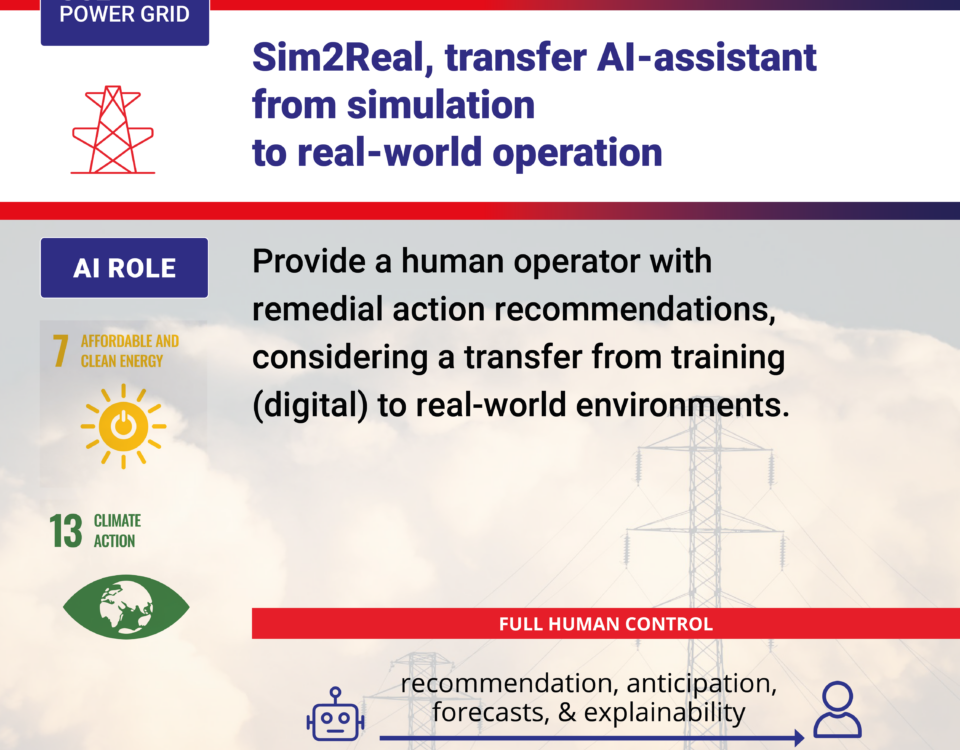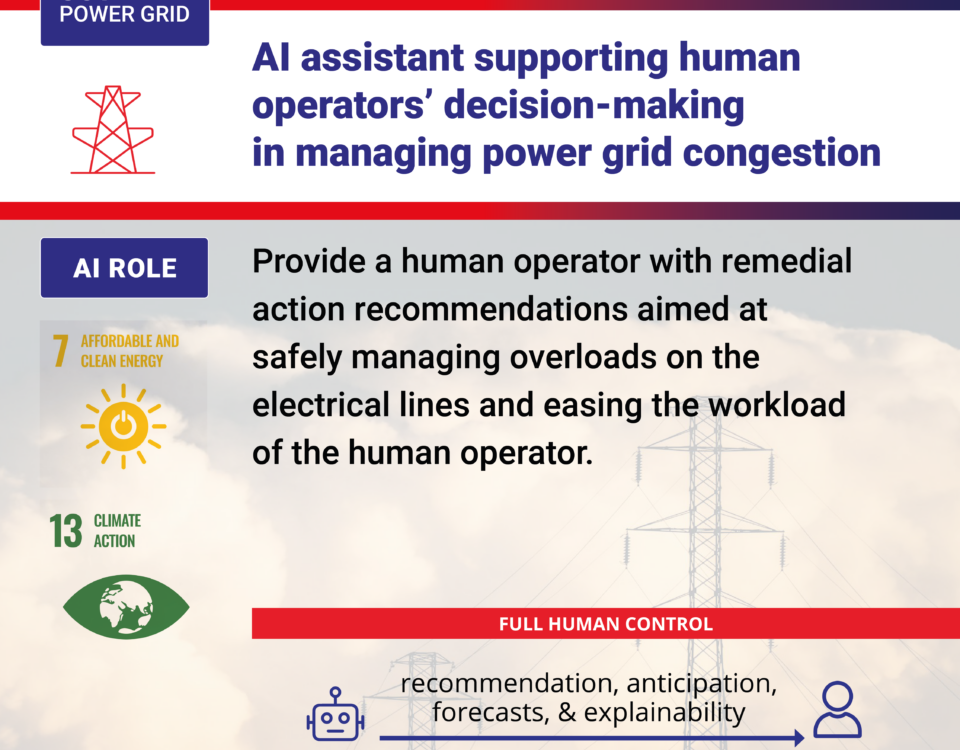Sim2Real, transfer AI-assistant from simulation to real-world operation
Context and motivation: Despite sharing identical functional properties, including grid components, topology, and operational constraints, the real-world operating scenario for AI assistants presents unique challenges that may deviate from the controlled conditions of the training phase (and environment). The concept of Sim2Real captures the fundamental transition from a training environment (digital or simulation) to reality, reflecting the necessity for an AI assistant to seamlessly adapt and perform optimally in the dynamic and unpredictable conditions of a real transmission grid. This transition underscores the significance of assessing the AI assistant’s ability to generalise its learned behaviours and decision-making processes, considering the complexities and uncertainties inherent in real-world grid operations. In high-risk sectors, it is crucial to ensure that the AI assistant’s capabilities extend beyond theoretical simulations to effectively address the nuanced challenges and variations encountered in practical and operational scenarios.
Problem formulation: Outlines two paths for an AI assistant to manage a transmission grid. 1) In coping with real-world conditions, the AI assistant monitors grid situations, raises alerts for human intervention, and provides action recommendations, considering uncertainty from noisy and partially missing data. The human operator makes decisions based on AI suggestions, with feedback loops to continuously improve interactions and learn from realised actions. 2) When data limitations prevent full autonomy, the AI assistant alerts the human operator due to missing or poor-quality data. The operator can provide missing information to aid the AI in such cases.
Stakeholders: Transmission system operators, human operators, transmission grid users, and electricity market participants.
Threats and vulnerabilities: Adversarial data attacks; trust from human operators; mismatch between AI training and deployment; dependency on external systems (forecasting, SCADA measurements); human manipulation (e.g., misleading feedback, deliberately misusing the AI learning process).
Key benefits: Minimise operational costs; facilitate energy transition by reducing renewable energy curtailment; reduce the workload of the human operator; increase resilience to extreme (natural and man-made) events).
- Date
- 06/12/2023
https://ai4realnet.eu/wp-content/uploads/2024/09/Use-Case-power-grid-2.pdf- Date
- 06/12/2023
https://ai4realnet.eu/wp-content/uploads/2024/09/Use-Case-Power-grid-1.pdf

